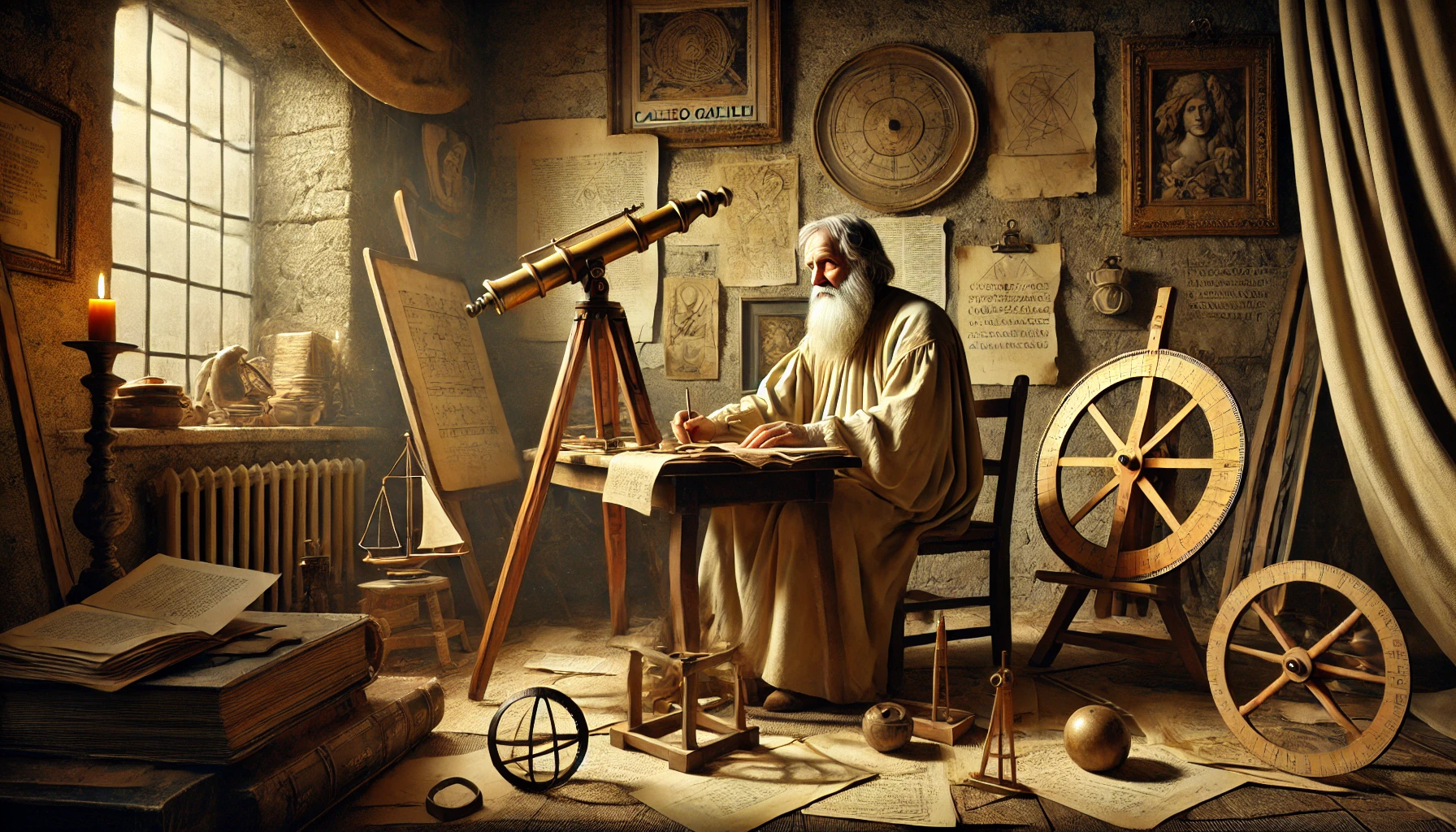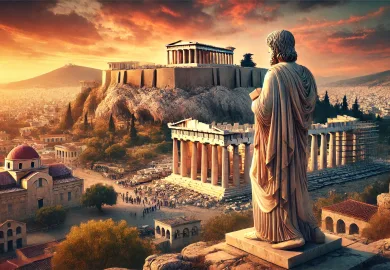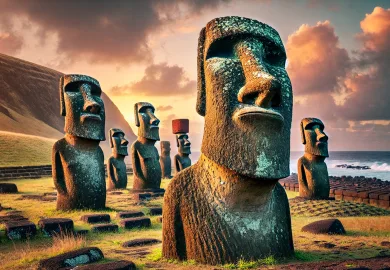
Galileo Galilei, often hailed as the “father of modern science,” was an Italian polymath who revolutionized the fields of astronomy, physics, and mathematics. His contributions to mathematics, in particular, provided the foundation for the scientific revolution and reshaped how humans viewed the universe. Galileo’s work spanned many disciplines, but it was his mathematical genius that allowed him to make groundbreaking discoveries that still resonate today. His ability to blend mathematics with experimentation forever changed the course of science.
While Galileo is often remembered for his astronomical observations, such as the moons of Jupiter and the phases of Venus, his profound understanding of mathematics fueled much of his success. This article explores the life and works of Galileo, delving into how his mathematical brilliance shaped his discoveries, impacted future generations, and cemented his legacy as one of the greatest thinkers of all time.
Galileo’s Early Life and the Spark of Mathematical Genius
Galileo Galilei was born in Pisa, Italy, on February 15, 1564. From an early age, his intellectual curiosity was apparent, and he was introduced to mathematics through his father’s influence. His father, Vincenzo Galilei, was a musician who had a deep appreciation for mathematical harmony in music, which undoubtedly planted the seeds of mathematical reasoning in Galileo’s mind.
While initially enrolling in the University of Pisa to study medicine, Galileo quickly shifted his focus to mathematics and natural philosophy. He became fascinated by the works of Euclid and Archimedes, whose geometric theories would later form the backbone of his own studies. Galileo’s rejection of the traditional Aristotelian views in favor of mathematical explanations set him apart from his peers.
It was during this period that Galileo began developing his revolutionary ideas on motion, applying geometry and algebra to understand how objects moved. His observations laid the groundwork for his later discoveries in both astronomy and physics.
The Application of Mathematics to Physics
One of Galileo’s most important contributions was his application of mathematics to the study of motion. In an era where scholars relied heavily on philosophical arguments, Galileo’s approach was revolutionary. He believed that the laws governing the natural world could be described through mathematical formulas rather than relying on abstract reasoning.
Galileo’s experiments with falling objects at the Leaning Tower of Pisa are legendary. He disproved the long-held belief of Aristotle that heavier objects fall faster than lighter ones. Instead, Galileo showed that objects of different masses fall at the same rate, provided air resistance is negligible. This marked the beginning of what would later become the study of kinematics, a branch of physics deeply rooted in mathematics.
Another landmark contribution was his study of projectile motion. Galileo demonstrated that the motion of a projectile could be described as a parabola, combining both horizontal and vertical movements in a way that could be accurately predicted using mathematical equations. This concept was revolutionary for military applications, as it allowed for more precise predictions of where cannonballs or other projectiles would land.
Galileo and the Telescope: Mathematics Meets Astronomy
In 1609, Galileo heard of the invention of the telescope and immediately recognized its potential. By improving upon the design, he created a telescope that allowed him to make astonishing astronomical observations. Galileo’s keen mathematical mind was essential in interpreting what he saw through the telescope and explaining these phenomena using geometrical principles.
One of Galileo’s most famous discoveries was the four largest moons of Jupiter, which are now known as the Galilean moons. His ability to mathematically calculate their orbits provided evidence against the geocentric model of the universe, which posited that all celestial bodies revolved around the Earth. Galileo’s observations supported the Copernican model, which placed the Sun at the center of the universe.
He also observed the phases of Venus, another phenomenon that could only be explained if Venus orbited the Sun. Once again, Galileo used mathematics to bolster his arguments, showing that the changing phases of Venus could be predicted and matched with mathematical precision to support the heliocentric model.
Galileo’s application of mathematics to astronomy marked a paradigm shift in how the universe was understood. By emphasizing the importance of observation and mathematical reasoning, he laid the groundwork for modern astronomy.
The Mathematical Genius Behind Galileo’s Scientific Method
Perhaps one of Galileo’s most enduring legacies is his development of the scientific method, a systematic way of testing hypotheses through experimentation and observation, underpinned by mathematical analysis. While this may seem like an obvious approach to modern scientists, it was a radical departure from the methods used by scholars of Galileo’s time, who often relied on philosophical discourse rather than empirical evidence.
Galileo believed that nature’s truths could be uncovered by carefully designed experiments that could be mathematically analyzed. He argued that mathematics was the language in which the universe was written, famously stating, “The book of nature is written in the language of mathematics.” This philosophy guided his work and helped him unlock some of the deepest secrets of the natural world.
Galileo’s use of mathematical models to describe physical phenomena—such as acceleration, inertia, and motion—paved the way for future scientists like Isaac Newton to further develop the laws of motion and gravity. Newton himself famously remarked that he “stood on the shoulders of giants,” acknowledging Galileo’s foundational contributions to mathematics and physics.
The Lasting Legacy of Galileo’s Mathematical Genius
Galileo’s work had profound implications not just for his own time but for centuries to come. His ability to combine observation with mathematical reasoning revolutionized both science and mathematics. The Galilean method became the foundation of modern physics and led to significant advancements in areas such as mechanics, optics, and astronomy.
Despite facing opposition from the Catholic Church, which famously placed him under house arrest for his defense of the heliocentric model, Galileo’s ideas continued to spread throughout Europe. His works, such as the “Dialogue Concerning the Two Chief World Systems,” were influential in the rise of the scientific revolution.
Today, Galileo is remembered not only for his astronomical discoveries but for his unique ability to describe the physical world in terms of mathematical principles. His legacy lives on in the fields of science, technology, and mathematics, where his methods and ideas continue to inspire new generations of scholars and researchers.
In conclusion, Galileo Galilei’s mathematical genius was the key to unlocking many of the secrets of the natural world. His work transcended the boundaries of his time, laying the foundations for the development of modern science. Through his innovative use of mathematics, Galileo transformed our understanding of motion, astronomy, and the very nature of the universe. His lasting contributions to mathematics and science have cemented his place in history as one of the greatest thinkers of all time.








